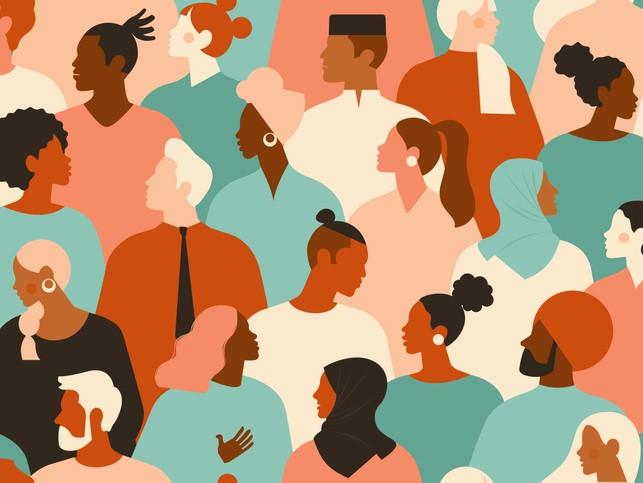
We must dismantle the invisible career barriers in HE
Despite surface appearances, universities’ recruitment and selection practices still present hidden obstacles to under-represented groups

On the surface, universities’ recruitment and selection practices appear to be highly equitable and transparent – particularly in recent years. But dig under the surface and there’s no doubt that you’ll find hidden barriers to certain groups.
Many are acknowledged to be under-represented among academic staff, based on intersecting identities of gender, ethnicity, disability and socio-economic background. This comes despite universities’ public commitments to equity and representation.
Higher education institutions (HEIs) have undoubtedly tried to take steps to address a lack of diversity, usually through formal policies and processes that intend fairer outcomes from recruitment and selection processes.
- Campus webinar: Recruit, develop and retain the best staff in higher education
- What are the barriers to success for under-represented researchers in STEM?
- How do universities successfully recruit faculty and staff?
There have also been widely publicised attempts to introduce training in unconscious bias to help selection panels overcome the biases inherent in us all. Many universities have implemented structured interviews and diverse panels to try to instil a reliable and inclusive process.
Thankfully, long gone are the days of overt forms of illegal discrimination; universities strive to attract applications from diverse groups through inclusive language, case studies and improved recruitment channels.
So why do many universities report the continued under-representation of certain groups? Are we just going through the motions of transparent recruitment and structured selection processes? The data would suggest so.
Hidden barriers in recruitment and selection practices
The following points lift the lid on hidden barriers faced by under-represented groups in our recruitment and selection practices. The onus to adapt is on us as organisations, not individuals. By talking about the hidden barriers, we can help bring them down.
Research metrics
A scan of job descriptions and adverts reveals that the selection criteria used for academic roles are largely based on measurable research outputs such as publications, h-index, impact factor and income.
This reliance on research metrics contradicts the reality of the broader role of the academic, who today is expected to be much more than a researcher. Lecturers are expected to be not only productive researchers but also educationalists, managers and strong administrators − as well as collaborative corporate citizens. Yet these broader contributions are not valued by selection panels, meaning that some academics are overlooked in the selection process. This includes if an academic has a lower h-index, fewer publications or an atypical career trajectory owing to caring responsibilities or a previous career in industry. It also excludes those who have taken on additional managerial or administrative roles.
Our preoccupation with research outputs is undermining universities’ attempts to become more diverse, but commitments such as Dora are starting to help.
Networks and cronyism
Networks are key in academia. Access to jobs, conferences, peer-review processes, letters of reference and even editorships or co-authoring opportunities depends very much on networks. This has a double-whammy effect − those who cannot access such networks will be excluded from generating the research metrics outlined above and subsequently excluded during the selection process. This accepted form of cronyism is adversely impacting the outcome of recruitment processes.
Academic inbreeding
Academics in the UK are often employed in the same institution that awarded their PhD, meaning that the effects of networks and exclusion described above can start right at the point of entry into the higher education system if people do not have the “right” institution listed on their CV.
Academic CV
The academic CV is unlike those in other sectors. The extent to which information is available to selection panels about academic candidates (including their networks, co-authors and research metrics) is unparalleled. Yet this accumulated data could be exacerbating bias and flawed decision-making in selection processes.
Overall, it seems apparent that the existence of extensive, formal policy and a reliance on measurable research metrics could be giving a false sense of security to universities. It is incumbent on institutions to adjust our practices to be more inclusive. Optimistically speaking, I think the tide is slowly turning and universities are trying to adapt.
How to navigate career barriers
In the meantime, candidates can use these three tips to help navigate these barriers:
Network, network, network
As mentioned, academia is built on networks, so anything you can do to access these networks will help you. Many universities offer networking opportunities and coaching in the art of networking as part of their development plans to support up-and-coming career academics − speak to your HR or learning and development teams to see if your institution offers these opportunities. Similarly, employee-led networks can help open doors and connect you with different people.
Mentoring
It has been said many times before, but a mentor can really help with career progression – from interview coaching and spotting opportunities to giving you the courage to take the plunge with job applications and opening up (even) more networks. Many institutions have formal mentoring programmes, so speak to your line manager or head of department. Reverse mentoring has also become popular, whereby less-experienced academics mentor more senior staff.
Take part in selection panels
If you can help, even as an observer in a shortlisting or interview process, you can learn so much about the protocols, questions and criteria used. Your participation could also help spread the word about inclusive recruitment and selection practices to those who may not be aware of the hidden barriers described above, and you will help challenge the status quo. Universities have been encouraging more diversity on selection panels, so register your interest. Sign up to interview and selection training even if you’re not a hiring manager right now − the insight you gain could be invaluable in your own job search.
Rebecca Jarrett is head of HR operations and resourcing at Cranfield University.
If you would like advice and insight from academics and university staff delivered direct to your inbox each week, sign up for the Campus newsletter.
Additional Links
For more resources on this topic, see our spotlight on how universities can boost staff diversity.


.jpg?itok=L8-6q_qg)